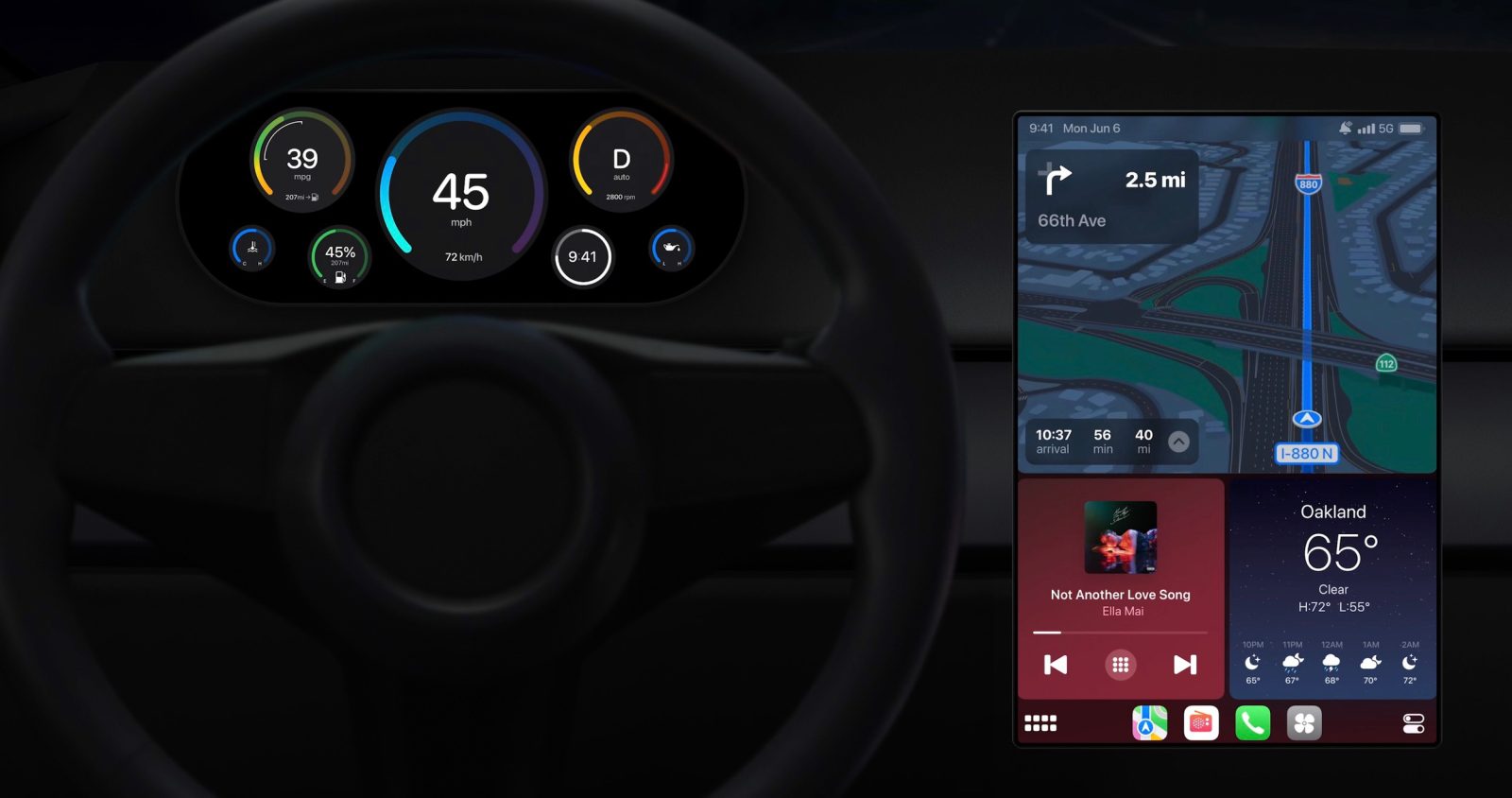
Since its initial introduction, Apple’s CarPlay platform has become ubiquitous. It’s available in the vast majority of new cars on the market today, and for good reason: it’s one of the top things people look for when buying a new car.
At WWDC in June 2022, Apple announced what it calls the “next generation of CarPlay.” This new CarPlay interface is set to debut in new cars this year, and it’s going to be a big change.
The first automakers signed on to support next-gen CarPlay? Porsche and Aston Martin. Here’s everything we know.
An all-new design for CarPlay
CarPlay was originally launched as “iOS in the Car” as part of iOS 7 and was rebranded as CarPlay shortly thereafter. Since that rebrand, CarPlay’s interface hasn’t changed much. The biggest design change came with iOS 13, when Apple introduced a new Dashboard interface with different “cards” for apps like Maps, Music, and more.
The “next generation” of CarPlay, however, will pretty much give the CarPlay interface a complete overhaul. While we haven’t gotten a chance to try the new CarPlay design, Apple’s imagery from WWDC offered a sneak peek.
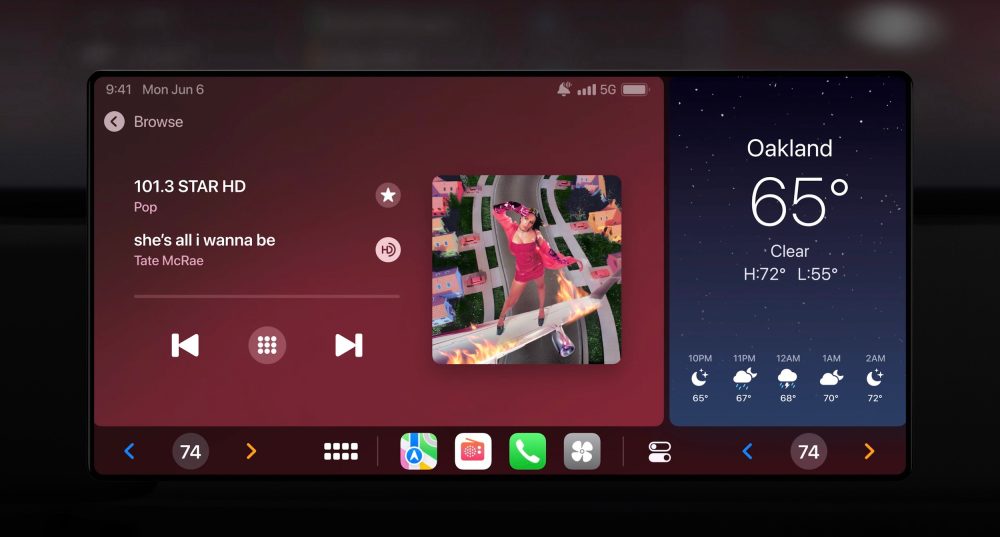
The new design still relies on a grid of app icons as its primary user interface element, but there are plenty of other changes surrounding that app grid. There will be a split-view style interface for showing multiple apps at the same time, as well as a Dock at the bottom with quick access to recently used apps.
Where the new CarPlay interface really shines, however, is with how it can take over your car’s entire infotainment system. This includes the center console display in its entirety, as well as any other displays like one behind the steering wheel.
Apple explains:
CarPlay has fundamentally changed the way people interact with their vehicles, and the next generation of CarPlay goes even further by deeply integrating with a car’s hardware. CarPlay will be able to provide content for multiple screens within the vehicle, creating an experience that is unified and consistent.

One of Apple’s mock-ups of the new design uses a car that’s similar in style to the Mercedes-Benz EQS, where there’s basically one large display that stretches from behind the steering wheel to the passenger side. The interface looks to be completely modular, with different tiles and widgets for apps like Weather, HomeKit, and more.
Another mockup (at the top of this story) shows a car that’s very similar to the Ford Mustang Mach-E, which features a portrait-oriented center display and a smaller instrument cluster behind the steering wheel.
In these images, you can see how the CarPlay interface can adjust based on different screen sizes. It’s where the “modularity” of the widgets and cards comes into play. But the key to this new design is that it completely replaces the car manufacturer’s software interface.
Deeper integration with cars
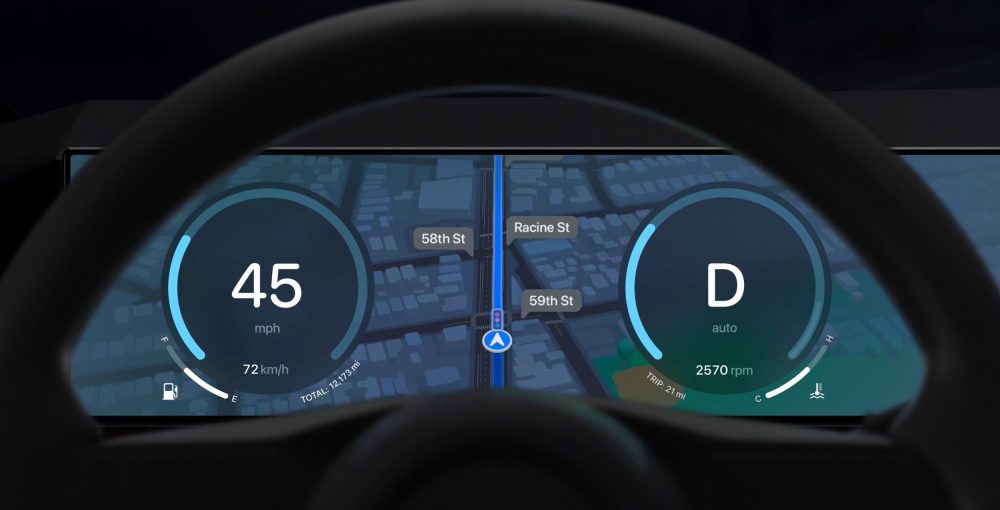
If CarPlay is going to take over your entire in-car experience, then it needs to be able to access all of the features and functionality of your car. With this in mind, the “next generation” of CarPlay will have access to a much broader range of car features than before. Apple says that this is accomplished by your iPhone communicating with your car’s real-time system.
This includes things like climate control, fuel and battery charge levels, radio controls, instrument cluster data, and more. “CarPlay will seamlessly render the speed, fuel level, temperature, and more on the instrument cluster,” Apple says. “Deeper integration with the vehicle will allow users to do things like control the radio or change the climate directly through CarPlay.”
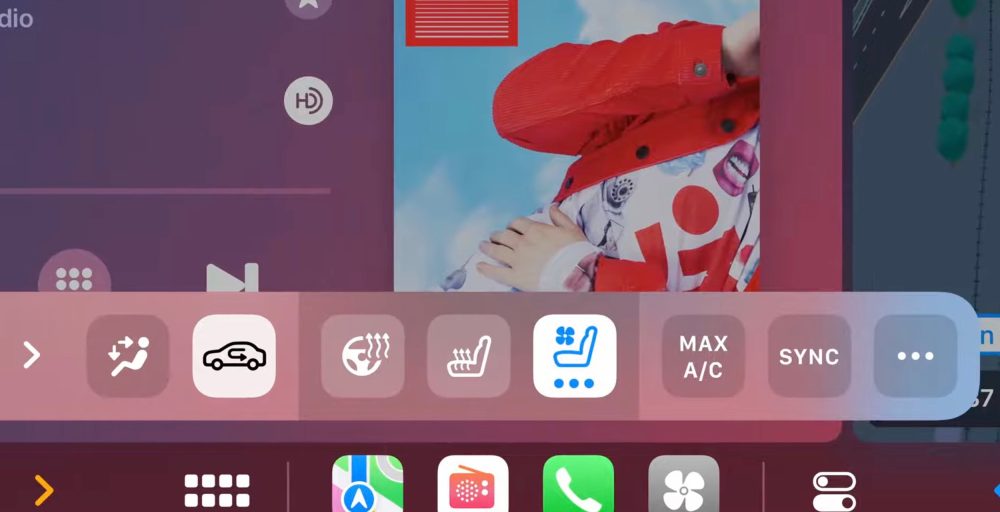
Think of it this way: everything you previously had to use your car’s native interface for will now be fully integrated with CarPlay itself. In an ideal implementation, this means you’ll only ever interact with CarPlay.
Design customization
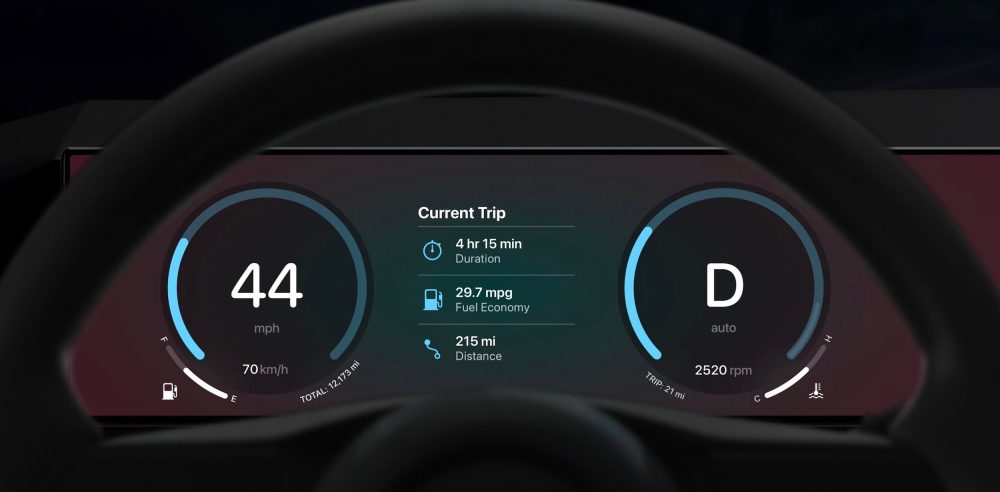
With all of this data, the aforementioned design changes make a lot more sense. You’ll be able to personalize your driving experience by choosing different gauge cluster designs and managing the layout of the instrument cluster itself. Apple says it carefully crafted different instrument cluster designs, “ranging from the modern to the traditional.”
Apple also says there will be different layout options for yet another level of customization. You’ll also be able to pick custom fonts, font sizes, and font colors for the various aspects of your car’s interface.
Meanwhile, CarPlay widgets will give you at-a-glance information from apps like Music and Weather.
The first cars with next-generation CarPlay

Apple first announced this next-generation CarPlay platform at WWDC 2022, promising the first vehicle announcements would happen before the end of 2023.
Sure enough, in December 2023 Apple announced its first two partners for next-generation CarPlay: Porsche and Aston Martin. Both automakers are committed to launching next-gen CarPlay at some point in 2024, but no further details are available just yet. Aston Martin has clarified that its DB12 sports car will be at least one of the cars to ship with next-generation CarPlay this year.
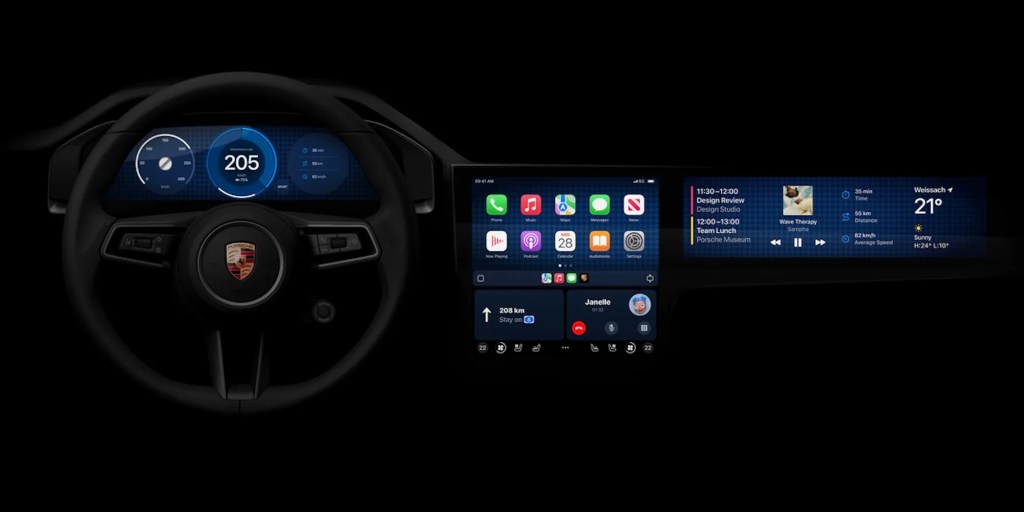
Who else will support next-generation CarPlay?
Other than Porsche and Aston Martin, here are the automakers that have signed on to support this new CarPlay interface.
- Land Rover
- Mercedes-Benz
- Lincoln
- Audi
- Volvo
- Honda
- Nissan
- Ford
- Jaguar
- Acura
- Polestar
- Infiniti
- Renault
One thing to remember, however, is that the adoption and implementation details of this new CarPlay are outside of Apple’s control. Ultimately, it’ll be up to each of these automakers and their respective timelines to roll out the new CarPlay design. And most of those automakers have been quiet on their plans so far.
Apple says that it will share “more information about the next generation of CarPlay” ahead of the official launch later this year. Keep in mind that the design Apple showed off at WWDC was a “sneak peek,” so there will be changes between it and what’s ultimately released.
Follow Chance: Threads, Twitter, Instagram, and Mastodon.
FTC: We use income earning auto affiliate links. More.

